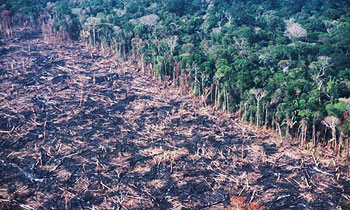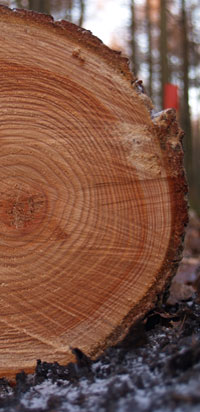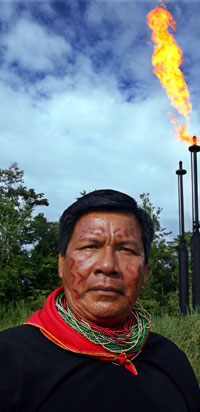
 In both Indonesia and Brazil, it is clear that deforestation is continuing apace — despite laws designed to slow it.
In both Indonesia and Brazil, it is clear that deforestation is continuing apace — despite laws designed to slow it.
Indonesia’s president finally gave details on a five-month-old logging moratorium under U.N.’s REDD program, revealing that many industries will be allowed to continue their activities in forests. Meanwhile, satellite photos revealed that an area of Amazon rainforest 10 times the size of Manhattan was cleared in the past two months, a 473 percent increase over the same period last year. The shocking reversal after a few years in which Amazon deforestation fell dramatically seems to confirm fears that farmers and ranchers are clearing rainforest in anticipation of Brazil weakening laws that protect forests.
Within the Indonesian government, there has been a power struggle between the traditional bastion of power, the Ministry of Forestry, and this new entity of reform headed by a national taskforce for REDD+ (Reducing Emissions from Deforestation and Forest Degradation). What happened behind the scenes in drawing up the presidential instruction? What sort of lobbying was done by the palm oil, pulp and paper, and mining sectors? The forestry sector doesn’t seem to be threatened by the moratorium. The biggest loser may be community-managed forests, which are arguably more sustainable than the industrial pulp producers and loggers. That's a big story that's been mostly ignored.
I was surprised to see … the extent of exemptions under the moratorium. It's also been troubling to see that most of the area that is going to be "protected" under the moratorium was already protected on paper as national parks.
I’ll be watching … to see how much forest is still going to be destroyed under the moratorium and the extent of exemptions. I believe we'll see more of a debate on whether the moratorium will actually help Indonesia meet its emissions reduction targets. Right now, wranglings over definitions of what constitutes forest are largely a red herring: if you cut down forest, no matter how you classify it, it generates carbon emissions.
Click to read more about this topic
- Indonesia's Moratorium Disappoints Environmentalists Indonesia's moratorium disappoints environmentalists print Indonesia's moratorium disappoints environmentalists print Indonesia's moratorium disappoints environmentalists [By Rhett Butler, Mongabay.com]
- Election Cycle Linked to Deforestation Rate in Indonesia [By Rhett Butler, Mongabay.com]
- Fighting Illegal Logging in Indonesia by Giving Communities a Stake in Forest Management [By Rhett Butler, Mongabay.com]
- Greening the World with Palm Oil? [By Rhett Butler, Mongabay.com]
- Does Chopping Down Rainforests for Pulp and Paper Help Alleviate Poverty in Indonesia? print Does chopping down rainforests for pulp and paper help alleviate poverty in Indones [By Rhett Butler, Mongabay.com]
- Will Indonesia's Big REDD Rainforest Deal Work? [By Rhett Butler, Mongabay.com]
- Indonesia's Plan to Save Its Rainforests [By Rhett Butler, Mongabay.com]
- Geothermal Mining Allowed in Forests [BY Fidelis E. Satriastanti , The Jakarta Globe]
Amazonian indigenous peoples are actually part of the ecosystem, but their presence becomes unsustainable when they are used as labor for extractive industries. As various products come into and fall out of favor, indigenous people become trapped in cycles of debt and poverty. For this reason, some people consider indigenous populations to be part of the problem and promote policies that would keep them out of areas targeted for preservation. But that would exclude them from practicing historically sustainable livelihoods.
The long supply chain: Half of the world's top 10 soy producers are in South America, and a majority of their output is exported to the E.U and China for biofuels and to feed animals on factory farms.
Greasing the palm: Palm oil is also displacing rainforests in many parts of the world. Read the labels at grocery stores, and you'll find that it’s nearly unavoidable.
Click to read more about this topic
- Feedlot Meat Has Spurred a Soy Boom That Has a Devastating Environmental and Human Cost [By Jill Richardson, AlterNet]
- Authorities Launch Stealth Operation in Amazon After Satellite Images Reveal Deforestation [By Karimeh Moukaddem, Mongabay.com]
- Brazil Confirms Big Jump in Amazon Deforestation [By Rhett Butler, Mongabay.com]
- Brazil's Crackdown on Deforestation of the Amazon [By Tom Phillips, The Guardian]
- Brazil Debates Weakening Forest Protection Law [By Bradley Brooks , Associated Press]
| Tweet This Page |










